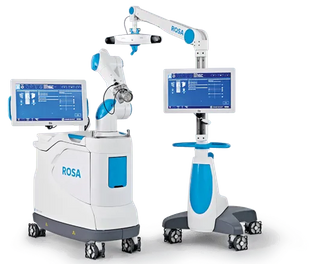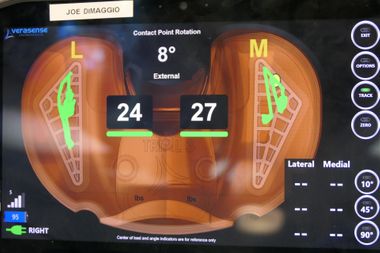Robotic & Computer Assisted Surgery
Simon has always had an interest in technology and innovation in orthopaedic surgery. He was an early adopter of computer navigated surgery and has used it routinely for his knee replacement surgery for over ten years. He has been trained in robotic assisted surgery in both Australia and the US and has published research on the use of the Verasense Pressure monitoring devices used in total knee replacement surgery.
Robotic Knee Surgery
- Better planning and modelling of your knee’s unique structure that enables a higher level of joint alignment accuracy.
- A more precise fit, which optimises both range of motion and stability
- Less blood loss
- Less pain
- Shorter post op rehabilitation
Computer Navigated Knee Surgery
Computer navigation provides the surgeon with the real-time 3-D images of the mapped patient’s affected joint and the surgical instruments during surgery. The data for the images is provided by the infrared sensors fixed to the bones of the joint and the surgical instruments.
Their position is tracked by an infrared camera placed above the surgical table connected to the computer. The computer then generates the real-time images with the help of the appropriate software to guide the surgeon to precisely resurface and cut the bones of the joint and fix the implant precisely & accurately according to the pre-operative surgical plan.
There is good evidence that this allows more accurate and precise positioning of the components and the hope is that this will lead to better function and longevity.
Verasense Pressure Monitors
Verasense Pressure Monitors enables surgeons to quantify ligament balance and customize implant position by giving them real-time, evidence-based data during primary and revision total knee arthroplasty (TKA).
This disposable, intelligent device delivers data wirelessly to an intra-operative monitor that enables surgeons to make informed decisions regarding implant position and soft-tissue releases to improve knee balance and stability through the range of motion.
This monitor – the LinkStation MINI – displays intraoperative data on a high definition tablet screen that occupies minimal space in the operating room.



